Results 1 to 10 of 12
Thread: First resto.... Imperial
-
05-28-2015, 03:46 AM #1
 First resto.... Imperial
First resto.... Imperial
This is my first full restore. Forgot to get the before pics on this one. The blade was ok shape but had some pitting, which I left, cuz' I like that sort of thing. The scales were one of a kind. The most hideous creations I have ever seen on a razor. They used pin which they had cut almost in half, pinned the blade with a folded over 12 gauge copper wire and used square nuts, like something that would fit an 8x32 screw. I'm guessing this guy was an electrician, but who knows. Well the copper turned green and stained the whole area around itself, which was an improvement to the scales as they were about 1" tall and 1/2" wide, roughly shaped with a dull pocket knife and had a coat of walnut colored stain slapped on.
Blade: Imperial Razor
Warranted
Registered 20507
Germany
Scales: Ipe
Wedge: Ipe.
Finish: Lacquer rubbed out with rottenstone
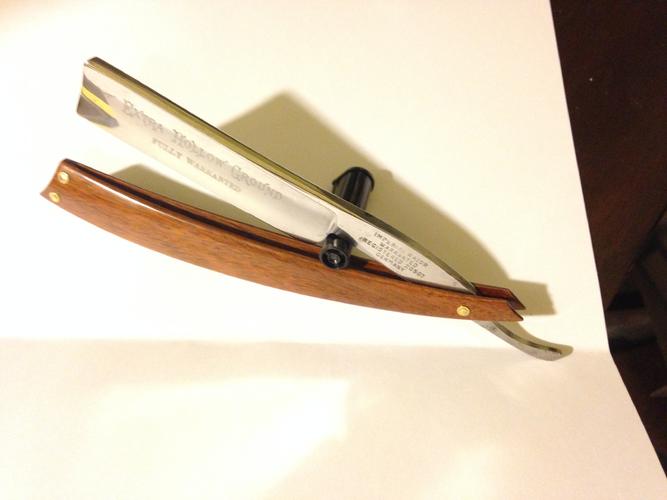
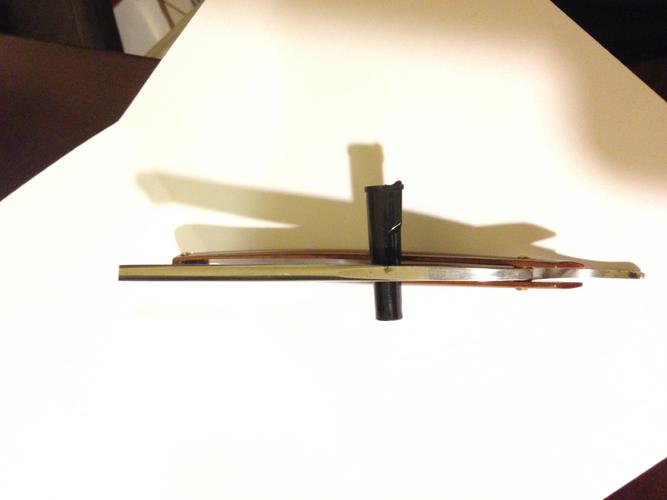
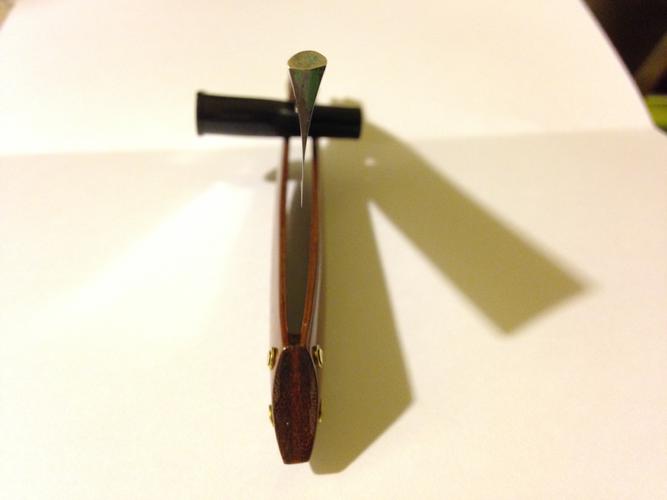
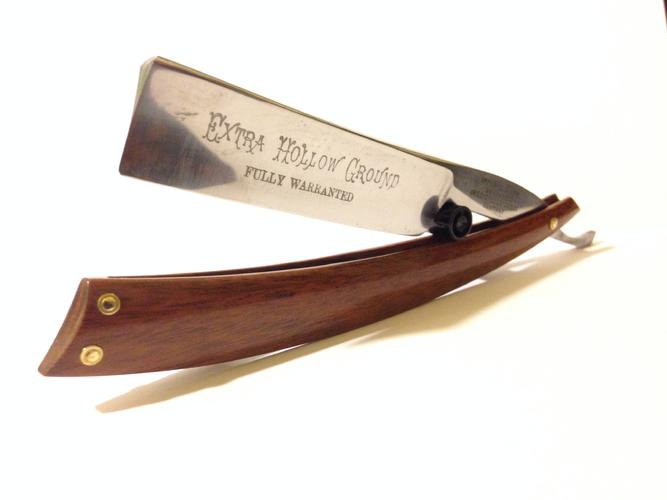
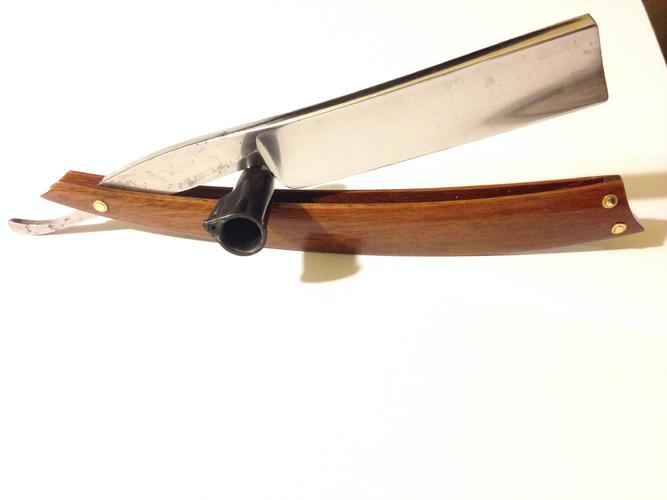
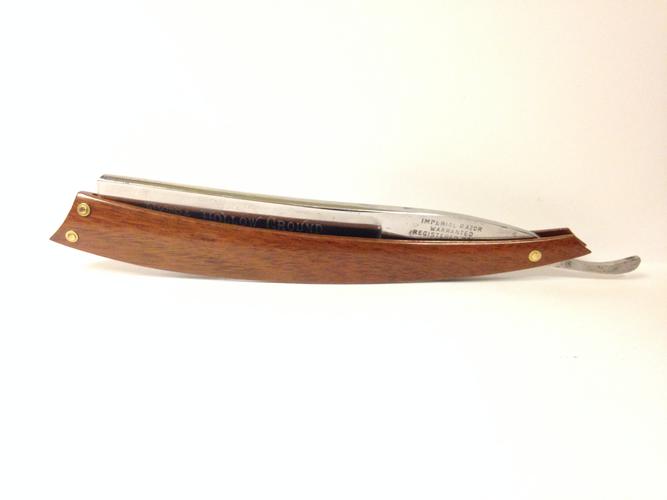
I made the wedge too wedgy, which splayed the scales too much. Not functionally detrimental but they could definitely protect the blade better when closed. I also should of made the scales a little longer so that the blade doesn"t look so snug. If there is anything else, let me have it.Last edited by jfk742; 05-28-2015 at 03:59 AM.
-
05-28-2015, 03:54 AM #2

Congratulations on the start of gaining experience. Excellent happened shows that you are trying to handle it looks great.
-
05-28-2015, 04:54 AM #3Senior Member




- Join Date
- Feb 2013
- Location
- Haida Gwaii, British Columbia, Canada
- Posts
- 14,457
Thanked: 4830
Well if you are looking for constructive criticism. It looks great, nice job on the finish and having the wood thin enough to get them to flex nicely. How does it feel in hand. Is it well balanced? How about when it is open into the stop and hone position, does it transition well from the tang to the scales? Those are things that I look at for function. To me function is very important because after all we want to use them as well as look at them. Also do the scales hold tight in the strop position? I could care less how tight the scales are in most positions but loose scales are a pain to strop with. Nice job, you have a little experience working with your hands I see.
It's not what you know, it's who you take fishing!
-
05-28-2015, 06:29 AM #4

I just finished setting a bevel honing it and shaving.
I like having baring washers in-theory, I think. The blade is tight but the washers don't let the scale tips grip it while stropping and honing. It tends to be a little floppy, probably larger or no washers.
Scales feel great from a tactile perspective but aren't heavy enough for this blade, I think a brass or lead wedge would fix my balance issue, or slightly larger scales.
The shave was good, at least! Typical German steel, something I've come to rely on when I need a good nick, and nick me she did. I've come quite accustomed to a radius toe, whether it be a barbers notch or square, must remember to mute this one.
-
05-28-2015, 07:00 AM #5

Great job on the scale finish.
From the second pic the thrust washers look a bit thick which may contribute to looseness when stropping. Most of the rehabs shoot for .004 to .007 in. thickness (.102 to .178 mm)
I have an Imperial and it is a good shaver.
A great start.If you don't care where you are, you are not lost.
-
05-28-2015, 08:30 AM #6Senior Member




- Join Date
- Feb 2013
- Location
- Haida Gwaii, British Columbia, Canada
- Posts
- 14,457
Thanked: 4830
I have only made a couple of sets of wood scales. One of the issues I experienced with wood scales is that I had a hard time getting the pivot pins tight enough without the washers sinking into the scales in one case and splitting the scales in another. My issues could have been resolved with larger outside washers, as in a set of stacked washers and perhaps the use of eyelets instead of washers. In time I will take a shot at another set of wood scales. For now I am pretty content with bone or horn for my material of choice. I think you came out of the traditional scales with this set but not so far in design that you lost function.
I also mute spike tips. I like my shave to be blood free and relaxing.It's not what you know, it's who you take fishing!
-
05-28-2015, 07:00 PM #7

I was going to go with black horn and a lead wedge and just try and copy what would have been true to the originals but I had the wood laying around and I don't know squat about horn and how it behaves.
What kind of wood have you tried, Rezdog? Ipe is as hard a wood as I have used. I think I may be hard pressed to sink a washer into it. I have had that problem with horn oth.
On another note, the scales I made have a little too much curve to them concerning functionality, though I really like them aesthetically next time I design scales again I'll lessen the curve or at least flatten it out near the pin.
-
05-28-2015, 07:14 PM #8Senior Member




- Join Date
- Feb 2013
- Location
- Haida Gwaii, British Columbia, Canada
- Posts
- 14,457
Thanked: 4830
Horn is usually very easy to work with. It machines easily with wood working tools and polishes quite fast too. When sanding it in the higher grits it has to be done wet. Sometimes you will get pieces that bend weird and cup after you have finished your scales, but that is more the exception than the rule. It is not always available at good prices and the streaked stuff can be pretty dear. Bone blanks are not always available either but both can often be found. There are two eBay sellers that I usually deal with. As far as wood that I have tried, there is fire killed swamp cedar, Pacific Yew and a wood I am not completely familiar with from Ontario that is some kind of Canadian version of Iron Wood. On the scale of cedar the fire kill is quite hard but is still very soft on the wood scale. The Yew and the other are very hard and dense woods.
It's not what you know, it's who you take fishing!
-
05-29-2015, 03:13 AM #9

I have some black horn with white streaks that are pretty cool, though I'm saving those for something more special.
How does thefire killed swamp cedar look? Sounds like it should have all sorts of mineralization and colors in it.
How do you deal with bone? I have access to quite a bit of it during deer season, any special treatment beyond drying it out?
-
05-29-2015, 03:54 AM #10Senior Member




- Join Date
- Feb 2013
- Location
- Haida Gwaii, British Columbia, Canada
- Posts
- 14,457
Thanked: 4830
The fire killed swamp cedar has a very dramatic appearance to the grain, it is much more showy and colorful than any other cedar. I may at some point try to rekindle those. The bone that I nave been using is commercially produced camel bone. It is suppose to be more dense and more uniform than other bone. I am uncertain about that though as it is all I know. I do have some cow bone in the shed that is drying. I cooked it first, as they make a great soup base, and now it is drying. At some point I will get to that project and slice them on the band saw. The black and white horn is pretty dramatic. I have some and have made a couple of sets of scales with them. I waited for the right project too. They are on my pair of Joseph Elliot for barbers use razors with the WR warrant on them. There have been some spectacular horn scales posted here over the years. Regardless of the color combinations the streaked horn is pretty sweet. My Elliots are here http://straightrazorpalace.com/razor...chables-4.html in post 39. The pictures are terrible but you get the idea. The little rattler in the same post also has streaked horn but honey and brown. I am not sure how deer bone will work out simply based on the diameter of the bones. The shin bones are suppose to be the better ones to use because they are suppose to be more dense. However the femur will be a much bigger bone.
It's not what you know, it's who you take fishing!


 17Likes
17Likes LinkBack URL
LinkBack URL About LinkBacks
About LinkBacks






 Reply With Quote
Reply With Quote


